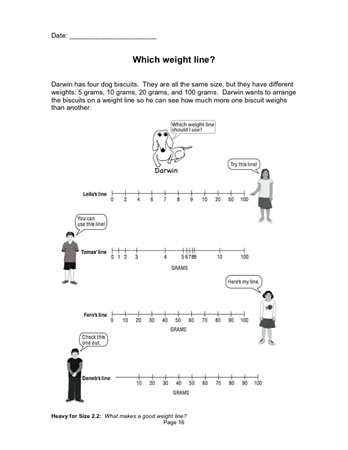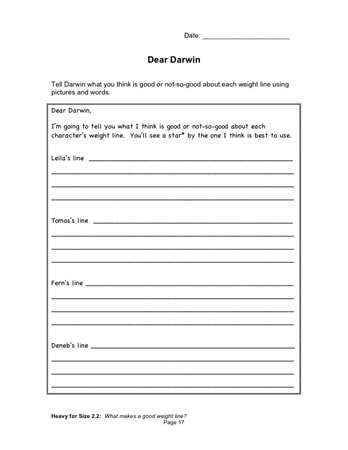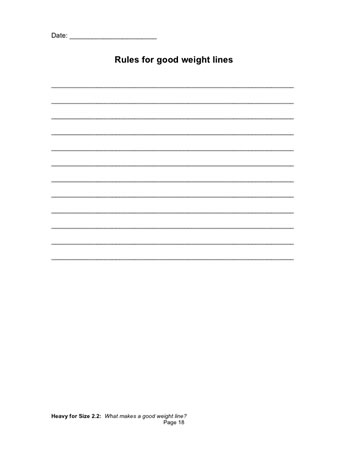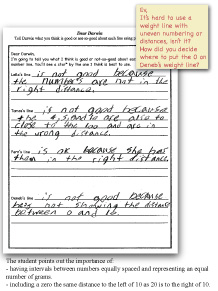What makes a good weight line?
Plan Investigation 2.2
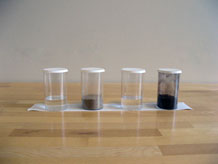
Scientists often use tables (as we did in the last investigation) to organize and represent the data they collect. However, there are other ways to represent data, and some representations are better than others for highlighting different aspects of the very same data set. In this investigation, we look again at our "equal volumes of different materials" data but this time using a measure line (weight line) instead of a table.
Formative Assessment
Do students understand the basic characteristics of a “good” weight line?
Available online at inquiryproject.terc.edu
Students study a set of weight lines, some of which are poorly constructed. Through their analysis of these lines they discover the essential characteristics of a good weight line: these include appropriate starting and ending points and a regular pattern of line spacing and number progression. These characteristics allow our eyes to make sense of the relationships between objects on the line. The weight line is an explicit representation of the closeness or distance between the weights of a set of objects; its geometry plays an essential role. Careful work with weight and volume measure lines lays a foundation for later understanding of information displayed in conventional graphs.
By the end of the investigation students will be able to construct their own weight lines for their earth materials — a challenge they will undertake in the next session.
Learning Goals
- Understand what makes a good weight line
| Sequence of experiences | ||
|---|---|---|
| 1. Ask the question | All Class | 15 Mins |
| 2. Explore weight lines | Individual | 15 Mins |
| 3. Develop rules for weight lines | Discussion | 15 Mins |
Materials and Preparation
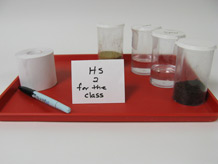
For the class:
- Post the investigation question in a place where all students can see it.
- Begin a class list with the title "Rules for a Good Weight Line" and post it where everyone can see it.
- Class data table for earth material weights (from the last investigation)
- 1 strip of adding machine tape
- 1 capped 150cc container with exactly 40cc of fresh water (from the last investigation)*
- 1 capped 150cc container with exactly 40cc of mineral oil (from the last investigation)*
- 1 capped 150cc container with 40cc of sand (from the last investigation)*
- 1 capped 150cc container with 40cc of organic soil (from the last investigation)*
* These 4 containers will also be used in the next investigation.
Concept Cartoon

The Weight Line Concept Cartoon is part of this investigation and is in the student science notebook.
Do students understand the basic characteristics of a “good” weight line?
For evidence, look at responses to the Dear Darwin Concept Cartoon. Use these criteria as you interpret students’ critiques of the 4 weight lines:
- Are the distances between neighboring tick marks equal in length?
- Do equal lengths represent equal differences in weight?
- Does the weight line start at 0?
- Is there a place on this weight line for each of the dog biscuits?
As a next step you might provide a small set of objects and their weights. Ask students to help you create a “good” weight line.


